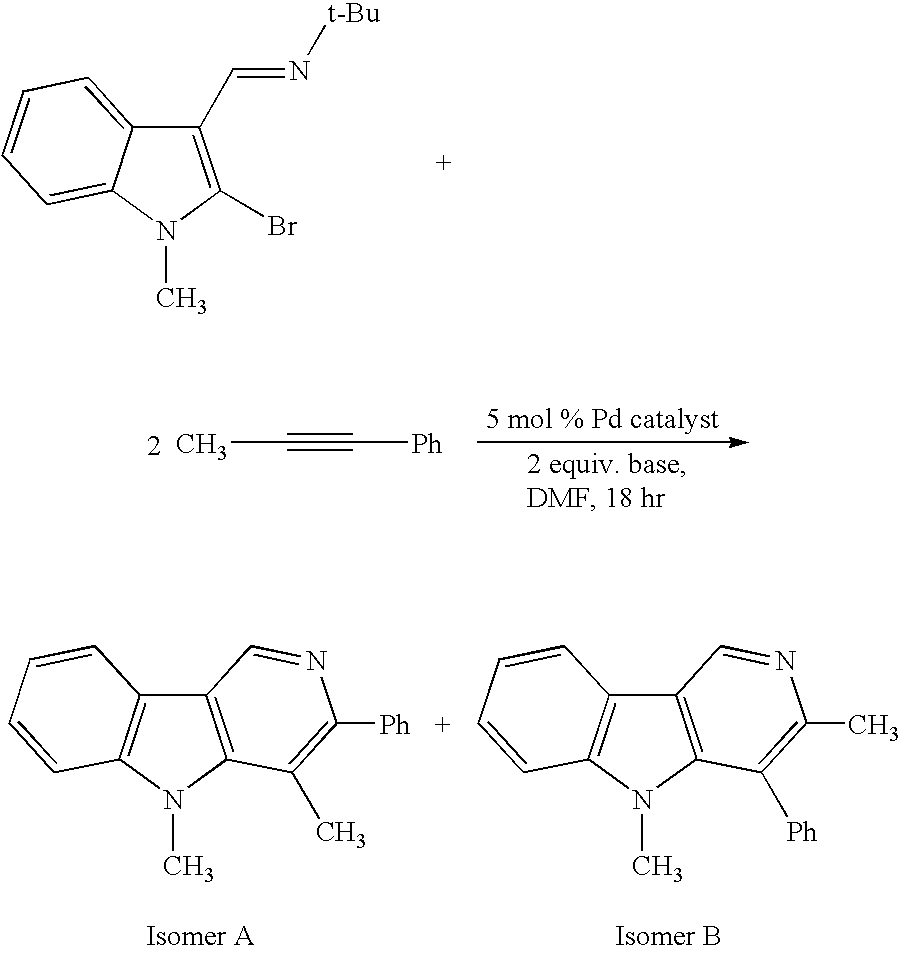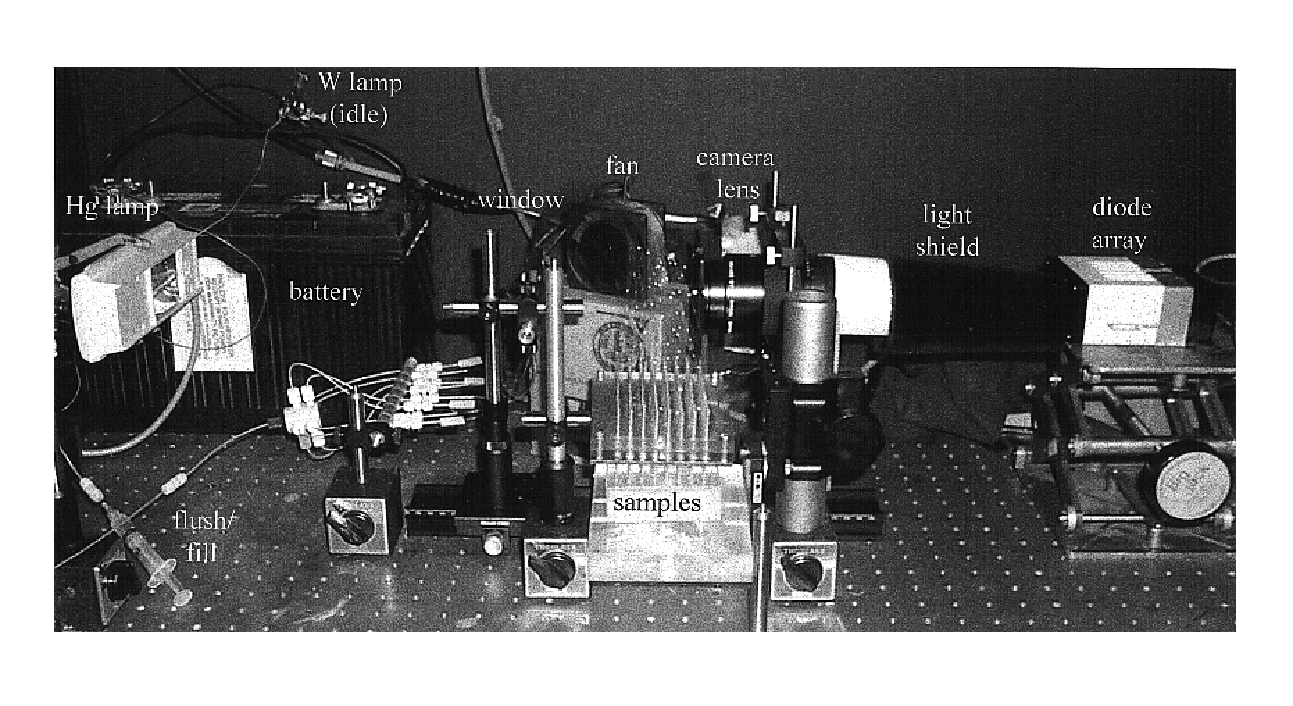Method of analyzing multiple samples simultaneously by detecting absorption and systems for use in such a method
- Summary
- Abstract
- Description
- Claims
- Application Information
AI Technical Summary
Benefits of technology
Problems solved by technology
Method used
Image
Examples
example 1
This example demonstrates a multiplexed capillary electrophoresis system that employs a single linear photodiode array detector.
Ninety six fused-silica capillaries (75 .mu.m i.d., 150 pm o.d.; Polymicro Technologies, Phoenix, Ariz.) with 35 cm effective length and 55 cm total length were packed side by side. An excimer laser beam was used to burn off the polyimide coating in the same region of each capillary to provide a "window" for passage of light from a light source through a sample to be introduced into and contained within each capillary. At the ground, i.e., exit, end of the capillary array, the capillaries were bundled together to allow simultaneous buffer filling and rinsing. At the injection end, the capillary array was spread out and mounted onto a copper plate to form an 8.times.12 format with dimensions that fit into a 96-well microtiter plate for sample introduction. In addition, 96 goldcoated pins (Mill-Max Mfg. Corp., Oyster Bay, N.Y.) were located next to the capill...
example 2
This example demonstrates the application of the present invention to genetic typing and diagnosis.
Based on the 96-capillary array electrophoresis system of Example 1, DNA analysis protocols were designed to take advantage of capillary array gel electrophoresis and absorption detection based on the inherent spectral properties of the DNA bases and the fact that a 100-bp DNA contains 100 absorbing units that can provide excellent net absorptivity for sensitive detection. The method was tested on two broadly used PCR protocols using typical concentrations of starting materials.
Samples were prepared as follows:
1. Multiplexed PCR for Variable Number of Tandem Repeats (VNTR) loci
AmpliFLP D1S80 PCR amplification kit was purchased from Perkin-Elmer Foster City, Calif.). The kit included D1S80 PCR Reaction Mix (containing two D1S80 primers, AmpliTaq DNA polymetase and dNTPs in buffer), MgCl.sub.2 solution and Control DNA 3(humangenomic DNA of D1S80 type 18, 31 inbuf...
example 3
This example demonstrates the application of the present invention to high-throughput comprehensive peptide mapping of proteins.
An experimental CE setup for multi-dimensional 96-capillary array electrophoresis similar to that of Example 1 was used. Briefly, a total of 96 fused-silica capillaries Polynicro Technologies, Inc., Phoenix, Ariz.), 50 .mu.m i.d. and 360-.mu.m o.d., with 50-cm effective length and 70-cm total length were packed side by side at the detection window and clamped between two flat surfaces of a plastic mount. The window was created after packing by using an excimer laser beam to burn off the polyimide coating. At the ground end (outlet), every 12 capillaries were bundled together to allow simultaneous filling of six-different buffers for six-dimensional peptide mapping. At the injection end, the capillary array was spread out and mounted on a copper plate to form an 8.times.12 format with dimensions to fit into a 96-well microtiter plate for sample introduction....
PUM
 Login to View More
Login to View More Abstract
Description
Claims
Application Information
 Login to View More
Login to View More - R&D
- Intellectual Property
- Life Sciences
- Materials
- Tech Scout
- Unparalleled Data Quality
- Higher Quality Content
- 60% Fewer Hallucinations
Browse by: Latest US Patents, China's latest patents, Technical Efficacy Thesaurus, Application Domain, Technology Topic, Popular Technical Reports.
© 2025 PatSnap. All rights reserved.Legal|Privacy policy|Modern Slavery Act Transparency Statement|Sitemap|About US| Contact US: help@patsnap.com



